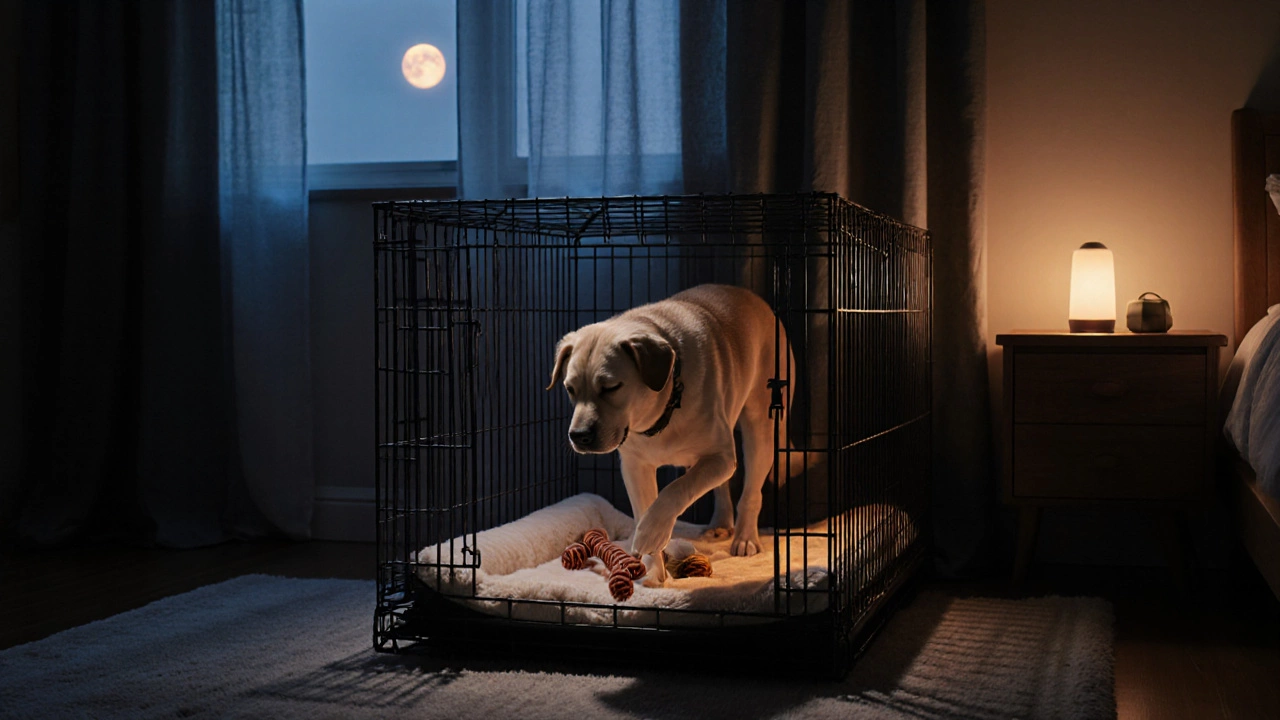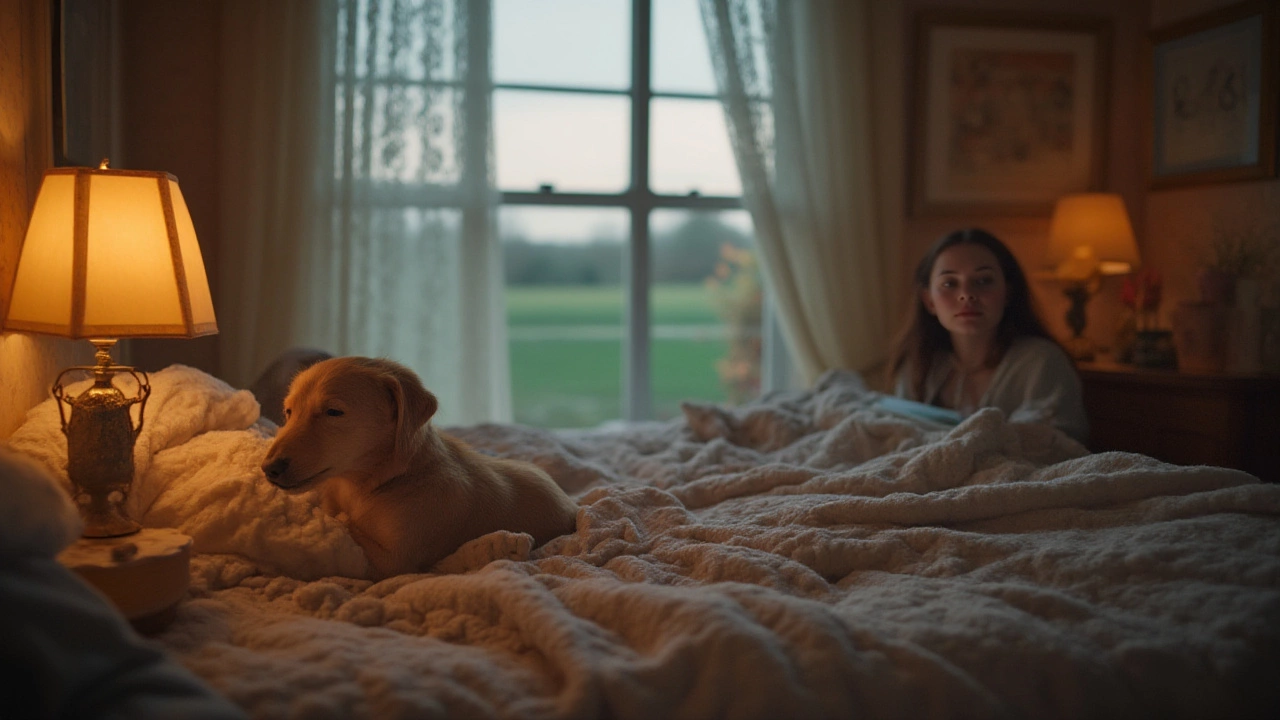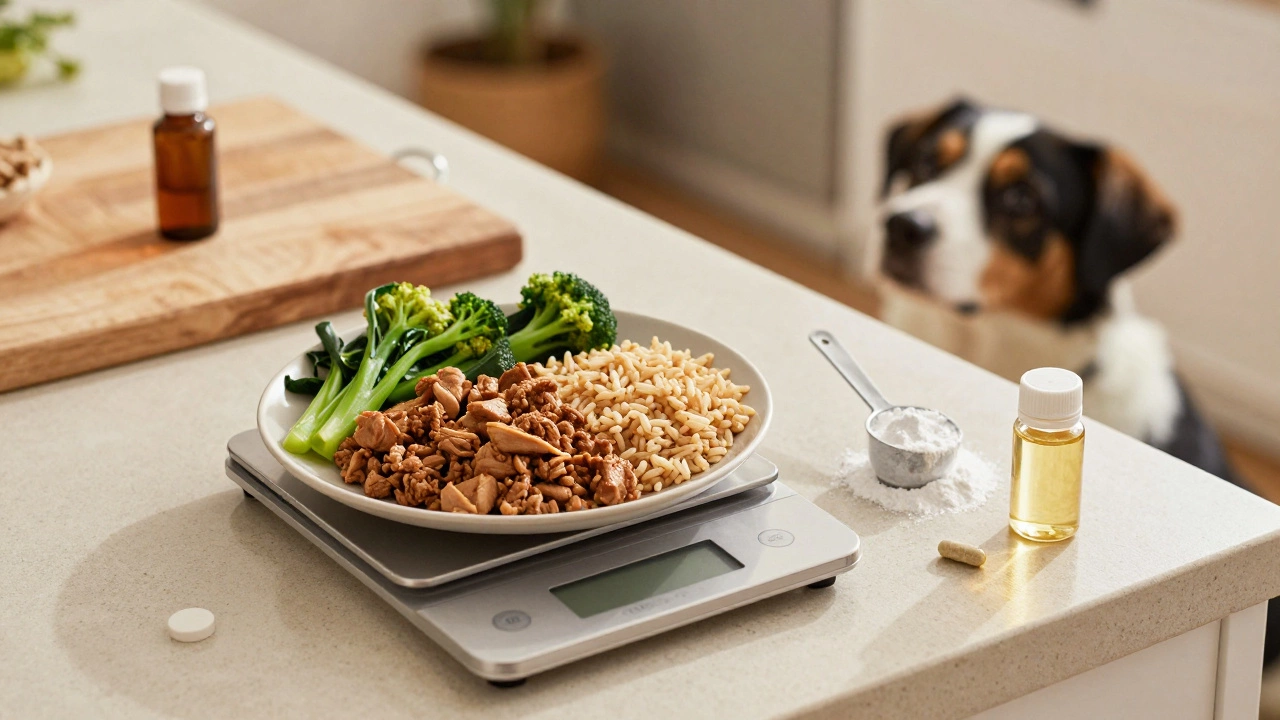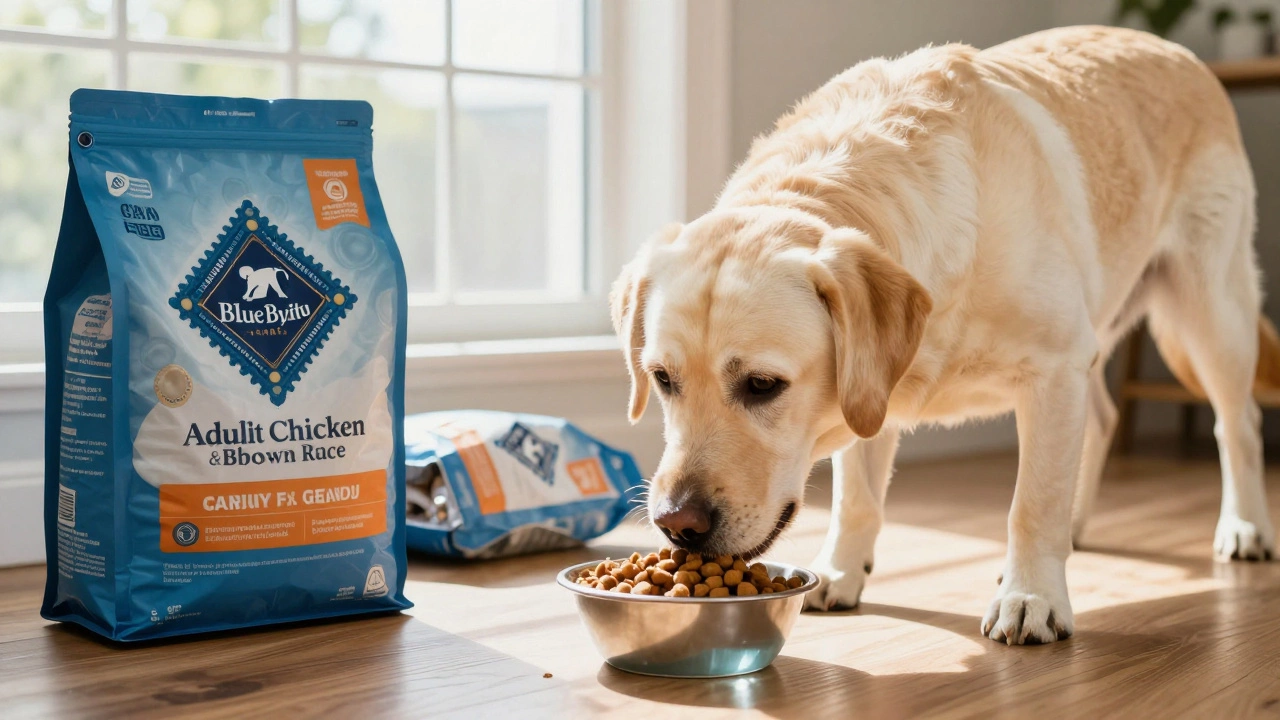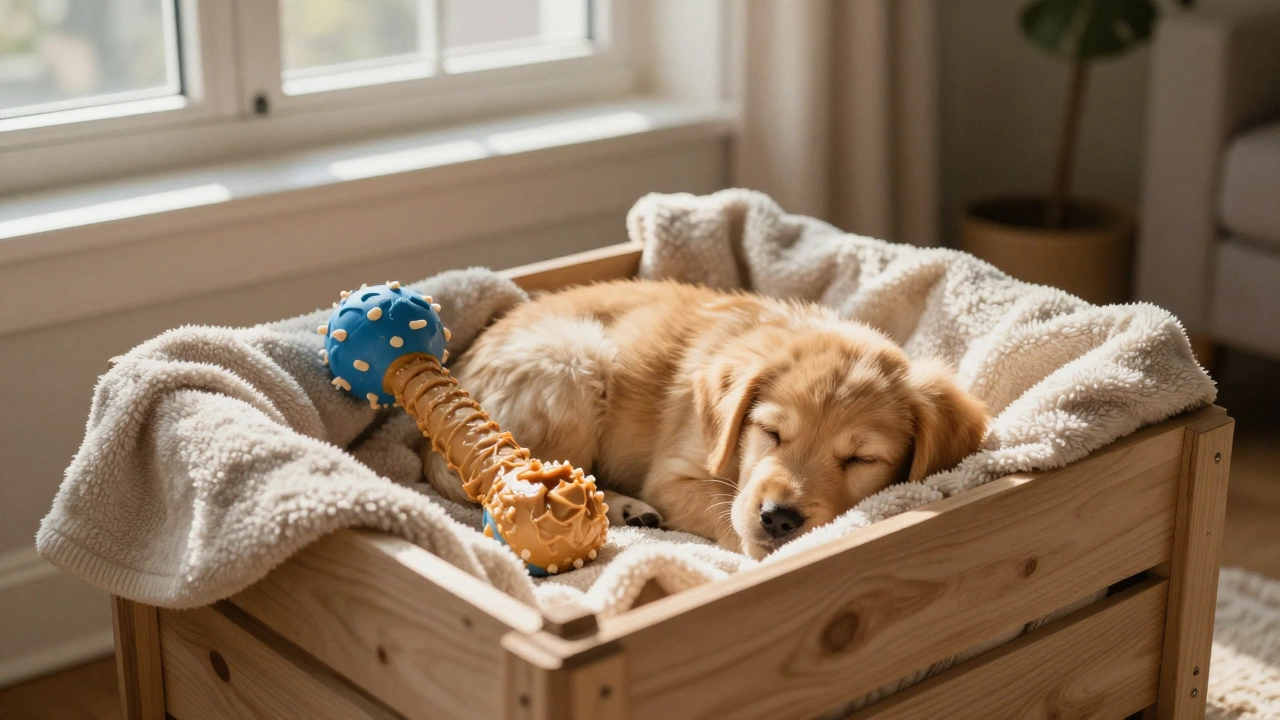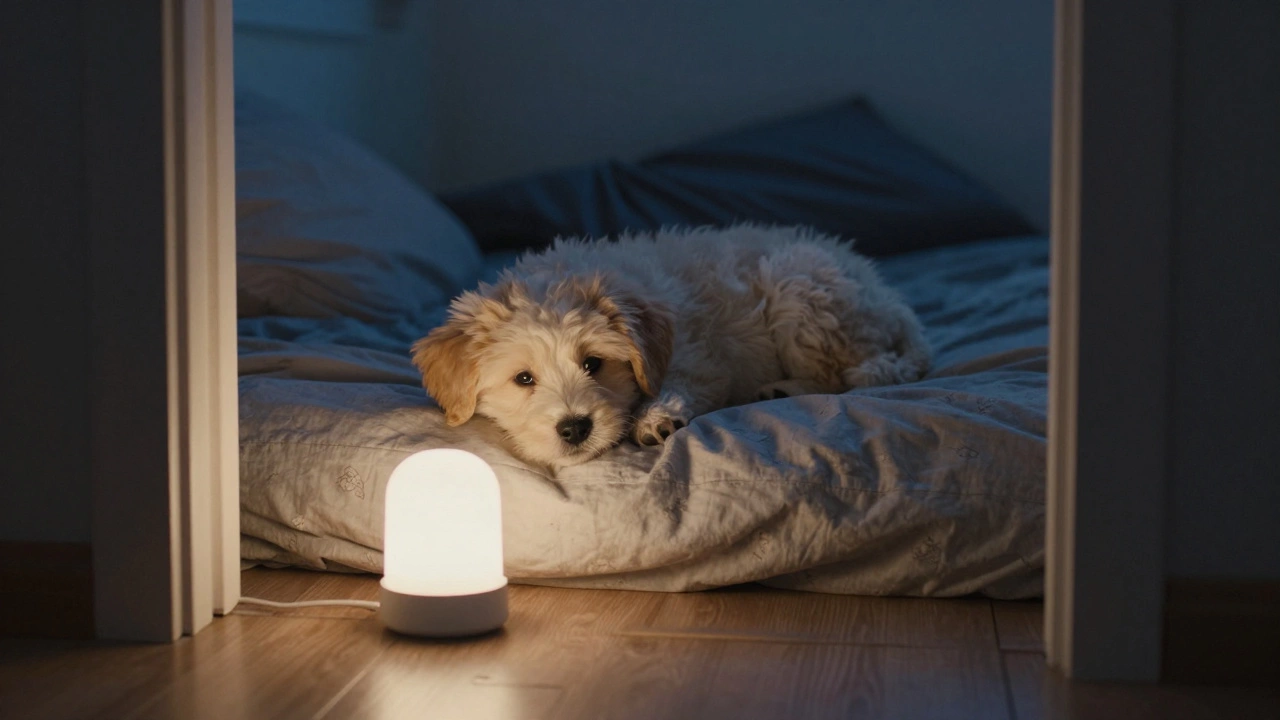Ever wondered whether you should lock your pup in a crate when the lights go out? The decision feels big - it’s about comfort, safety, and training all rolled into one night‑time routine. Below you’ll find a no‑nonsense rundown that tells you when a crate works, when it backfires, and how to set it up so both you and your dog sleep soundly.
TL;DR - Quick Takeaways
- Crating works best for adult dogs who already view the crate as a safe den.
- Key benefits: less nighttime accidents, safety from hazards, and a predictable sleep spot.
- Watch for signs of stress - pacing, whining, or refusing to enter.
- Set the crate up with a comfy pad, a chew‑proof toy, and a consistent bedtime cue.
- If your dog is anxious or the crate feels like punishment, try a dog bed or a puppy‑proofed room instead.
What a Dog Crate is
When it comes to nighttime, Dog Crate is a confined enclosure designed to give a dog a secure, comfortable space to rest. Think of it as a portable den that mimics a wolf’s natural denning behaviour - low‑light, cozy, and out of the way of kitchen traffic.
Why owners choose a crate at night
Crating isn’t a random trend; it solves real problems:
- Accident prevention: A properly sized crate teaches the dog to hold its bladder until morning, cutting down on soaked carpets.
- Safety shield: Keeps your dog away from cords, chemicals, and other household hazards you might forget about in the dark.
- Quiet zone: Dogs that whine or bark at night are contained, protecting neighbours and preserving your sleep.
- Training consistency: Reinforces the idea that the crate is a place to relax, not a punishment.
Potential downsides - when a crate can hurt more than help
Every tool has a flip side. Crating a dog that isn’t ready can trigger:
- Heightened anxiety, manifested as frantic pacing or excessive drooling.
- Health concerns if the dog can’t stretch, leading to stiff joints over time.
- Regression in housebreaking if the dog feels trapped and refuses to use the crate’s pad.
If you observe any of these signs, pause the crate and reassess.
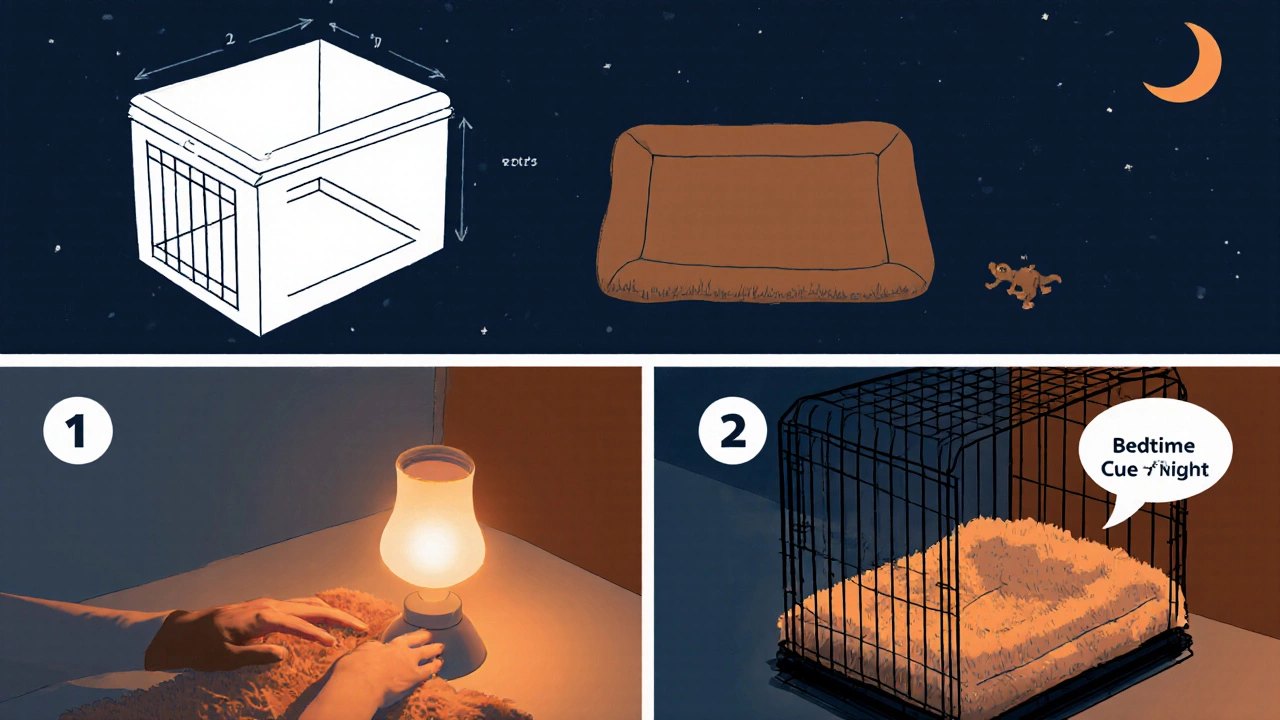
How to decide if a night‑time crate is right for your dog
- Age and size: Adult dogs over 12 weeks that can comfortably turn around in the crate are good candidates. Puppies under three months often need a larger space to move.
- Previous crate experience: Has your dog already accepted the crate during the day? A positive daylight association predicts nighttime success.
- Temperament: Dogs with a history of severe separation anxiety may need a gradual introduction rather than an overnight lock‑in.
- Household layout: If you have a quiet bedroom, placing the crate nearby can ease the dog’s transition.
Setting up the crate for a good night’s sleep
- Choose the right size: Allow at least two inches of space on each side of the dog’s body.
- Line the floor with a washable crate pad - comfort matters.
- Add a single chew‑proof toy. Too many toys can become an excuse for playtime.
- Place the crate in a low‑traffic area but not in a drafty spot. A night‑light can help the dog see the entrance.
- Establish a bedtime cue - a short phrase like “crate time” followed by a gentle pat on the pad.
- Do a quick pre‑bed check: empty water bowl, ensure the pad is dry, and close the door securely.
Once the routine is set, most dogs settle within 10‑15 minutes.
Alternatives to a night‑time crate
If crates feel too restrictive, consider these options. Below is a quick side‑by‑side look.
| Feature | Crate | Dog Bed | Playpen |
|---|---|---|---|
| Safety from hazards | High - walls block access | Low - open floor | Medium - fence limits area |
| Space for movement | Limited - one‑directional | Unrestricted | Moderate - can turn around |
| Training reinforcement | Strong - aids bladder control | Weak - no confinement cue | Medium - boundaries present |
| Stress potential | Medium - depends on dog’s comfort | Low - open, familiar | Low‑Medium - depends on size |
Pick the solution that matches your dog’s personality and your home’s layout.
Behavioural signs that the crate is not working
Even with a perfect setup, some dogs just won’t buy in. Keep an eye out for:
- Persistent whining or barking that doesn’t subside after 15 minutes.
- Attempts to escape by scratching or chewing the door.
- Refusal to enter the crate even when coaxed with treats.
- Visible signs of stress - drooling, panting, or trembling.
If two or more of these appear, give the crate a break for a few nights and revisit the introduction process.
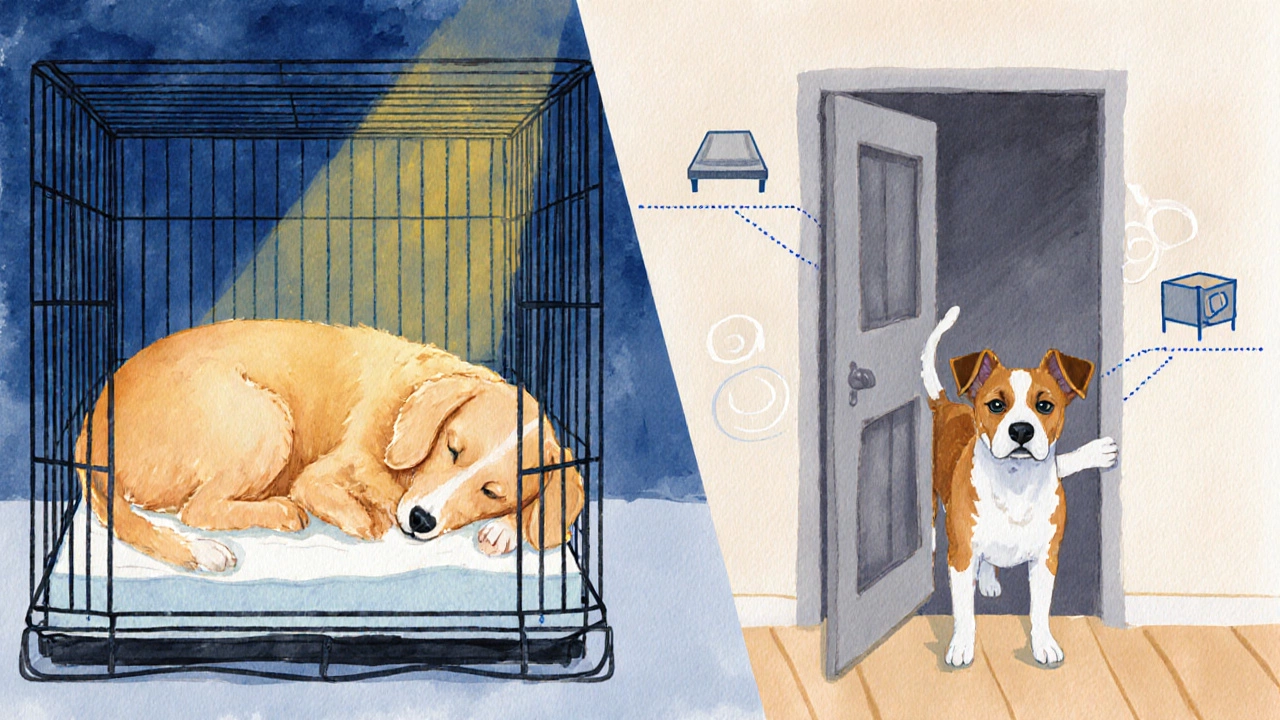
Expert advice - what a Veterinarian says
Most vets agree that a crate is safe for healthy adult dogs as long as it’s not used for more than 8‑10 hours at a stretch. They also stress the need for regular bathroom breaks - a quick trip to the yard before bedtime and a brief check‑in at 2a.m. for older dogs who can’t hold it as long.
For dogs with joint issues or brachycephalic breeds (like Bulldogs), a larger, well‑ventilated crate with a soft surface is essential to avoid breathing problems.
Mini‑FAQ
Frequently Asked Questions
How long can I leave my dog in a crate at night?
For most adult dogs, 8‑10hours is safe. Puppies under 4months need a break every 2‑3hours.
Do I need a special crate for nighttime?
A standard single‑door crate works fine. Just ensure it’s well‑ventilated and the right size.
My dog whines the first few nights - is that normal?
A little whine is common as the dog adjusts. If it continues past 3‑4 nights, reassess the crate’s comfort and placement.
Can I use a crate for a senior dog with arthritis?
Yes, but pick a larger crate with a memory‑foam pad and keep the door low‑hinged for easy entry.
What if my dog refuses to go into the crate at all?
Go back to daytime crate training: feed meals inside, use high‑value treats, and keep sessions short. Once the dog sees the crate as a positive spot, night use becomes easier.
Next steps & troubleshooting
Start simple: place the crate in a quiet corner, add a soft pad, and practice a quick “crate‑in” routine before bedtime. Track how your dog reacts for a week. If you notice stress signs, try the dog‑bed alternative for a few nights, then re‑introduce the crate with shorter intervals.
Remember, the goal isn’t to lock your dog away - it’s to give them a safe, predictable spot to rest while you get your sleep. With the right setup, a dog crate at night can become a win‑win for both of you.

